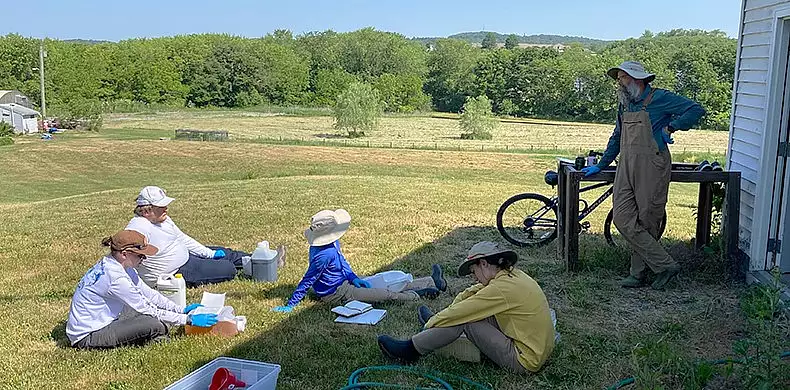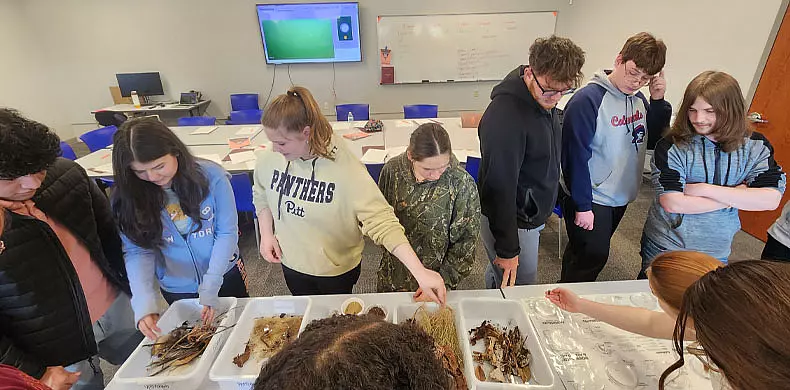Susquehanna University, in cooperation with the Chesapeake Conservancy, has launched a workforce development program that will prepare college students for careers in conservation.
This summer, four Susquehanna University students will be trained and certified as herbicide applicators to manage invasive plant species within watershed restoration sites. They also will work with regional partner organizations to learn about their programs, install restoration structures and plant trees, and attend weekly professional development workshops hosted by Susquehanna.
Matt Wilson, director of Susquehanna’s Center for Environmental Education and Research and Freshwater Research Institute, said plans are to pilot the program this summer and then increase efforts moving forward.
“We will teach undergraduate students the skills they will need as habitat restoration specialists while they simultaneously conduct much-needed maintenance work on 50 acres of existing restoration sites, where our partner organizations are in real need of help,” Wilson said. “Most of the places where we add fencing and plant trees are on farms where invasive species are common. We need to do something to keep that growth at bay until the newly planted trees are mature.”
The law requires anyone who applies or supervises the application of certain pesticides to be certified in accordance with EPA regulations and state laws. Certification involves a written exam, and for Susquehanna’s students it will also include a week of hands-on experience and several check-ins throughout the summer with their course instructor.
“As conservation efforts grow in the Chesapeake Bay watershed, workforce capacity is an emerging barrier to achieving tree canopy, riparian forest buffer, and climate resilience goals outlined in the Chesapeake Bay Watershed Implementation Plan,” said Chesapeake Conservancy Program Manager Adrienne Gemberling. “Many local and state governments, environmental consulting firms, and nonprofits throughout the watershed have had difficulty filling entry-level positions to keep up with the pace of new conservation funding and accelerating landowner willingness. The certification that this program awards is one that is in high demand for restoration work.”
In addition to their herbicide certification, students will learn about assessment and monitoring methods for stream health. One of the first workforce development trainings will focus on habitat assessment, which provides crucial data that DEP uses to add or remove a stream from the impaired list.
“We have been fortunate to partner with Susquehanna University and the Chesapeake Conservancy on many restoration projects and stream monitoring sites,” said Savannah Rhoads, watershed specialist with the Union County Conservation District. “The major hurdle we face is a lack of technical assistance — there simply aren’t enough agencies with the required skills to design and implement the work. Programs designed to train and certify future employees are integral to our ability to maintain, complete and take on new conservation projects moving forward.”
“As we act to address a changing climate and restore forests, cultivating the next generation of stewards are a big part of the solution,” Department of Conservation and Natural Resources Secretary Cindy Adams Dunn said. “We need all the help we can get, so the department applauds and supports this new effort to engage young people in conservation work.”
Susquehanna and the Conservancy have collaborated over the years to support research, education, restoration and advocacy to improve the ecological health of the regional watershed and ultimately the Chesapeake Bay. In March, Susquehanna and the Conservancy formalized their ongoing relationship through an agreement that ensures the organizations’ continued cooperation on restoration projects within the Susquehanna River watershed.
About the Chesapeake Conservancy
Chesapeake Conservancy’s mission is to conserve and restore the natural and cultural resources of the Chesapeake Bay watershed for the enjoyment, education and inspiration of this and future generations. It empowers the conservation community with access to the latest data and technology. The conservancy partnered to help create 206 new public access sites and permanently protect some of the Bay’s special places, like Werowocomoco, Blackwater National Wildlife Refuge, Harriet Tubman Underground Railroad National Historical Park, Mallows Bay National Marine Sanctuary, Fort Monroe National Monument, Elktonia Beach and Pissacoack along Fones Cliffs on the Rappahannock River.




